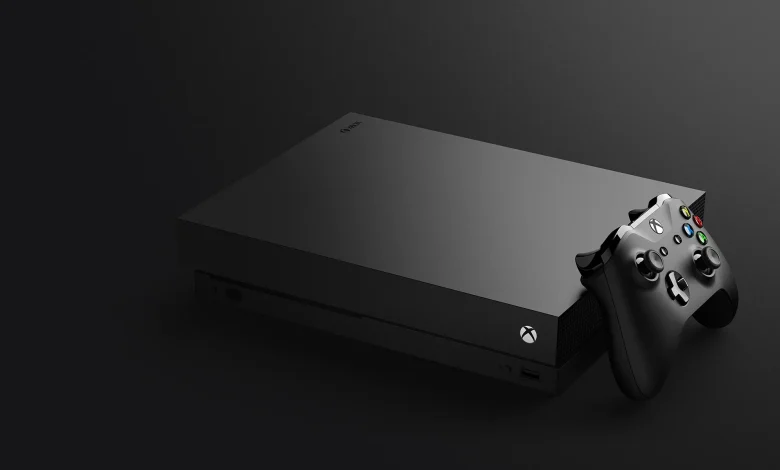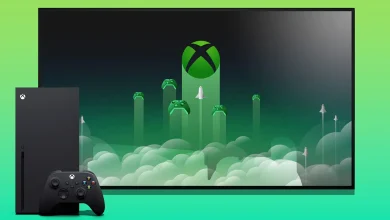
Introduction:
As the gaming landscape continued to evolve, Microsoft unveiled the Xbox One, heralding the arrival of a new era in interactive entertainment. With its cutting-edge technology, innovative features, and expansive ecosystem, the Xbox One sought to redefine the gaming experience and cement Microsoft’s position as a leader in the industry. This exploration delves into the evolution of the third-generation Xbox One, tracing its origins, impact, and enduring legacy in the ever-changing world of gaming.
A Unified Entertainment Hub:
Launched in November 2013, the Xbox One was envisioned as more than just a gaming console; it was a complete entertainment solution for the modern living room. At its core was the idea of unification, bringing together gaming, streaming media, and live television into a single, seamless experience. With features such as HDMI pass-through and integration with popular streaming services like Netflix and Hulu, the Xbox One transformed living rooms into immersive entertainment centers, catering to the diverse needs and preferences of consumers.
Unifying Entertainment: The Evolution of Xbox One as an Entertainment Hub
Introduction:
With the advent of the third-generation Xbox One, Microsoft embarked on a mission to redefine the concept of a gaming console, transforming it into a unified entertainment hub for the modern living room. Embracing a holistic approach to interactive entertainment, the Xbox One sought to seamlessly integrate gaming, streaming media, live television, and social connectivity into a single, cohesive experience. This exploration delves into the evolution of the Xbox One as a unified entertainment hub, tracing its origins, features, and enduring impact on the way we consume entertainment.
Vision for Integration:
Launched in November 2013, the Xbox One was conceived as more than just a gaming console; it was envisioned as a complete entertainment solution for the entire family. At its core was the idea of integration, bringing together gaming, streaming media, and live television in a seamless and intuitive manner. With features like HDMI pass-through and integration with popular streaming services like Netflix, Hulu, and Amazon Prime Video, the Xbox One transformed the living room into a dynamic entertainment center, catering to the diverse needs and preferences of consumers.
Seamless Multitasking:
Central to the Xbox One’s vision as an entertainment hub was its emphasis on seamless multitasking, allowing users to effortlessly switch between different forms of media and entertainment. With features like Snap Mode, users could run multiple apps side by side, enabling them to watch a movie while browsing the web, chat with friends while playing a game, or catch up on the latest news while streaming music. This seamless integration of entertainment options provided users with unparalleled flexibility and convenience, empowering them to customize their entertainment experiences to suit their preferences.
Live Television Integration:
In addition to gaming and streaming media, the Xbox One also sought to integrate live television into its entertainment ecosystem, offering users a comprehensive and immersive viewing experience. With features like OneGuide, users could access live TV listings and channel surf using their Xbox One controller or voice commands via Kinect. Furthermore, the Xbox One’s HDMI pass-through functionality allowed users to connect their cable or satellite box directly to the console, enabling them to seamlessly switch between live TV and other forms of entertainment without the need for additional hardware.
Voice and Gesture Controls:
A key enabler of the Xbox One’s vision as an entertainment hub was its innovative input methods, which sought to redefine the way users interacted with their entertainment devices. Central to this was the inclusion of Kinect, a motion-sensing peripheral that enabled users to control their Xbox One using voice commands, gestures, and facial recognition. With Kinect, users could navigate menus, control media playback, and interact with games and apps using natural movements and spoken commands, breaking down barriers and enhancing accessibility for users of all ages and abilities.
Social Connectivity and Community Building:
At its core, the Xbox One was about more than just consuming entertainment; it was about connecting with others and building communities around shared interests and experiences. With Xbox Live, users could connect, compete, and collaborate with friends and fellow gamers from around the world, fostering friendships and rivalries that transcended geographical boundaries. Furthermore, features like Clubs, Looking for Group, and Mixer streaming service provided new ways for users to engage with each other, share experiences, and build communities around their favorite games and interests.
Legacy and Impact:
The legacy of the Xbox One as a unified entertainment hub extends far beyond its hardware and features; it lies in its enduring impact on the way we consume entertainment and interact with our devices. From its seamless integration of gaming, streaming media, and live television to its innovative input methods and social connectivity features, the Xbox One redefined what it means to be a part of the living room entertainment ecosystem. As we look to the future, we can’t help but marvel at the boundless potential that lies ahead, fueled by the creativity, diversity, and innovation that define the Xbox One experience.
Powerful Hardware and Performance:
Underneath its sleek and modern exterior, the Xbox One boasted powerful hardware and performance capabilities that set it apart from its predecessors. Powered by an octa-core AMD processor, 8GB of RAM, and a custom AMD GPU, the Xbox One delivered stunning visuals, immersive gameplay, and lightning-fast performance. Furthermore, the inclusion of features like cloud computing and dynamic scaling enabled developers to create larger, more immersive worlds and experiences than ever before.
Unleashing Power: The Evolution of Powerful Hardware and Performance in the Third-Generation Xbox One
Introduction:
With the arrival of the third-generation Xbox One, Microsoft embarked on a mission to redefine gaming with powerful hardware and unparalleled performance. Embracing cutting-edge technology and innovative design, the Xbox One sought to push the boundaries of interactive entertainment, delivering immersive gaming experiences that captivated audiences worldwide. This exploration delves into the evolution of powerful hardware and performance in the Xbox One, tracing its origins, advancements, and enduring impact on the gaming landscape.
A Leap Forward in Hardware:
Launched in November 2013, the Xbox One represented a significant leap forward in hardware technology, boasting a powerful architecture designed to deliver stunning visuals, immersive gameplay, and lightning-fast performance. At its core was a custom-designed AMD Jaguar octa-core processor clocked at 1.75 GHz, paired with 8GB of DDR3 RAM and a custom AMD GPU capable of delivering 1.31 teraflops of processing power. This powerful hardware not only enabled breathtaking graphics and seamless gameplay but also laid the foundation for a new generation of gaming experiences.
High-Fidelity Visuals and Immersive Gameplay:
Central to the Xbox One’s vision was its commitment to delivering high-fidelity visuals and immersive gameplay experiences that pushed the boundaries of what was possible in interactive entertainment. With its powerful GPU and advanced graphics capabilities, the Xbox One was capable of rendering richly detailed environments, lifelike characters, and stunning special effects that transported players to new worlds and adventures. Whether exploring the vast landscapes of open-world epics or engaging in intense multiplayer battles, gamers were treated to a visual feast that brought their favorite games to life like never before.
Seamless Multitasking and Instant Response:
In addition to its raw processing power, the Xbox One also excelled in delivering a seamless multitasking experience and instant response times that enhanced the overall gaming experience. With features like Instant Resume and Quick Resume, players could switch between games and apps effortlessly, picking up right where they left off without any delay. Furthermore, the integration of cloud computing and dynamic scaling technologies allowed developers to create larger, more immersive worlds and experiences that responded dynamically to player actions and input, resulting in a more immersive and responsive gaming experience.
Optimized for Next-Generation Gaming:
As the gaming landscape continued to evolve, the Xbox One was optimized to support next-generation gaming experiences that pushed the boundaries of what was possible in interactive entertainment. With features like DirectX 12 support, the Xbox One delivered enhanced graphics, improved performance, and more efficient resource utilization, enabling developers to create larger, more immersive worlds and experiences than ever before. Furthermore, the inclusion of features like backward compatibility and Xbox Play Anywhere ensured that players could enjoy their favorite games across multiple platforms and generations, further extending the lifespan and value proposition of the Xbox One ecosystem.
Legacy and Impact:
The legacy of the Xbox One’s powerful hardware and performance extends far beyond its technical specifications; it lies in its enduring impact on the gaming industry and the broader entertainment landscape. From its stunning visuals and immersive gameplay to its seamless multitasking and instant response times, the Xbox One redefined what it means to be a part of the gaming community, inspiring a new generation of gamers, developers, and creators alike. As we look to the future, we can’t help but marvel at the boundless potential that lies ahead, fueled by the power, performance, and innovation that define the Xbox One experience.
Enduring Influence: The Legacy and Impact of the Third-Generation Xbox One
Introduction:
With the advent of the third-generation Xbox One, Microsoft embarked on a journey to redefine gaming and entertainment, pushing the boundaries of what was possible in interactive experiences. Beyond its technological advancements and innovative features, the Xbox One left an indelible mark on the gaming industry, shaping the trajectory of interactive entertainment for years to come. This exploration delves into the legacy and impact of the Xbox One, tracing its influence on gaming culture, industry trends, and the broader entertainment landscape.
Cultural Impact and Gaming Culture:
At its core, the Xbox One was more than just a gaming console; it was a cultural phenomenon that resonated with gamers around the world. From its iconic franchises like “Halo” and “Gears of War” to its innovative features like Xbox Live and Kinect, the Xbox One became synonymous with gaming culture, inspiring a passionate community of players, creators, and enthusiasts. Moreover, the Xbox One’s emphasis on community, connectivity, and inclusivity fostered a sense of belonging and empowerment within the gaming community, paving the way for more diverse and inclusive representation in games and gaming culture.
Industry Trends and Innovation:
The legacy of the Xbox One extends far beyond its hardware and features; it lies in its enduring impact on industry trends and innovation. From its powerful hardware and immersive gameplay experiences to its emphasis on social connectivity and community building, the Xbox One set a new standard for excellence and innovation in the gaming industry. Moreover, the Xbox One’s embrace of digital distribution, subscription services, and cross-platform play paved the way for new business models and revenue streams that continue to shape the future of interactive entertainment.
The Rise of Game Pass and Subscription Services:
One of the most significant contributions of the Xbox One to the gaming landscape was the introduction of Xbox Game Pass, a subscription service that provided access to a vast library of games for a low monthly fee. With Game Pass, players could enjoy a diverse selection of titles across genres and platforms, from blockbuster AAA releases to indie gems and classic favorites. This shift towards subscription-based gaming not only democratized access to games but also provided developers with a new avenue for reaching audiences and monetizing their creations.
Advancing Accessibility and Inclusivity:
Another hallmark of the Xbox One’s legacy is its commitment to advancing accessibility and inclusivity within the gaming community. Through features like Kinect, Xbox Adaptive Controller, and customizable accessibility settings, the Xbox One empowered players of all ages and abilities to enjoy gaming on their own terms. Furthermore, initiatives like Xbox Game Accessibility Awards and Gaming for Everyone underscored Microsoft’s commitment to fostering a more inclusive and welcoming gaming environment for all players.
Conclusion:
As we reflect on the legacy and impact of the third-generation Xbox One, we are reminded of its profound influence on gaming culture, industry trends, and the broader entertainment landscape. From its iconic franchises and innovative features to its emphasis on accessibility and inclusivity, the Xbox One redefined what it means to be a part of the gaming community, inspiring a new generation of gamers, developers, and creators alike. As we look to the future, we can’t help but marvel at the enduring influence of the Xbox One and the ongoing quest to push the boundaries of what’s possible in interactive entertainment.
Revolutionizing Input and Interaction:
One of the most significant innovations of the Xbox One was its revolutionary input and interaction methods, which sought to redefine the way players engage with games and media. Central to this was the introduction of Kinect, a motion-sensing peripheral that allowed for voice and gesture controls, facial recognition, and augmented reality experiences. With Kinect, players could navigate menus, control media playback, and interact with games using natural movements and spoken commands, breaking down barriers and enhancing accessibility for gamers of all ages and abilities.
Redefining Engagement: Revolutionizing Input and Interaction in the Third-Generation Xbox One
Introduction:
With the emergence of the third-generation Xbox One, Microsoft embarked on a mission to revolutionize the way players engage with their gaming experiences. By introducing innovative input and interaction methods, the Xbox One sought to break down barriers, enhance accessibility, and usher in a new era of immersive gameplay. This exploration delves into the evolution of input and interaction in the Xbox One, tracing its origins, advancements, and enduring impact on the gaming landscape.
The Advent of Kinect:
Central to the Xbox One’s vision of revolutionizing input and interaction was the inclusion of Kinect, a motion-sensing peripheral that enabled players to control their console using natural movements, voice commands, and gestures. By leveraging advanced depth-sensing technology and sophisticated algorithms, Kinect transformed living rooms into immersive gaming environments, allowing players to interact with games and apps in unprecedented ways. Whether navigating menus, controlling media playback, or participating in augmented reality experiences, Kinect opened up new possibilities for engagement and creativity.
Voice Commands and Natural Language Processing:
One of the most significant innovations introduced by Kinect was its support for voice commands and natural language processing, which enabled players to control their Xbox One using spoken commands and conversational interactions. By leveraging advanced speech recognition algorithms and cloud-based processing, Kinect allowed players to navigate menus, launch apps, and perform in-game actions using simple voice commands, without the need for a controller. This intuitive and hands-free approach to interaction enhanced accessibility and convenience, empowering players of all ages and abilities to enjoy gaming on their own terms.
Gesture Controls and Physical Interaction:
In addition to voice commands, Kinect also supported gesture controls, allowing players to interact with games and apps using natural hand movements and gestures. Whether waving to select menu options, swiping to navigate through content, or gesturing to perform in-game actions, Kinect provided a more intuitive and immersive way to engage with digital experiences. Furthermore, Kinect’s ability to track skeletal movements and recognize gestures in 3D space enabled players to participate in physical activities and exercise routines, transforming gaming into a fun and active form of entertainment.
Augmented Reality Experiences:
Another groundbreaking feature introduced by Kinect was its support for augmented reality experiences, which blended virtual and physical elements to create immersive and interactive worlds. Through features like Kinect Sports Rivals and Kinectimals, players could engage in virtual sports competitions, interact with virtual pets, and explore virtual environments using their own bodies as controllers. This fusion of real-world and virtual experiences not only provided players with new ways to engage with their games but also laid the groundwork for the future of mixed reality entertainment.
Legacy and Impact:
The legacy of Kinect and its role in revolutionizing input and interaction in the Xbox One extend far beyond its technical capabilities; it lies in its enduring impact on the gaming industry and the broader entertainment landscape. From its intuitive voice commands and gesture controls to its support for augmented reality experiences, Kinect paved the way for a new generation of interactive entertainment that pushed the boundaries of what was possible. As we look to the future, we can’t help but marvel at the enduring influence of Kinect and the ongoing quest to redefine engagement in gaming and beyond.
Expanding the Gaming Ecosystem:
In addition to its hardware and features, the Xbox One sought to expand the gaming ecosystem with a diverse array of titles and experiences. From blockbuster AAA titles to indie gems, the Xbox One offered something for everyone, catering to a wide range of tastes and preferences. Iconic franchises like “Halo,” “Forza,” and “Gears of War” thrived on the Xbox One, delivering immersive storytelling, breathtaking visuals, and addictive gameplay experiences. Furthermore, the Xbox Game Pass subscription service provided access to a vast library of games for a low monthly fee, offering unprecedented value and choice for players.
Embracing Community and Connectivity:
At its core, the Xbox One was about more than just gaming; it was about community and connectivity. With Xbox Live, players could connect, compete, and collaborate with friends and fellow gamers from around the world, fostering friendships and rivalries that transcended geographical boundaries. Furthermore, features like Clubs, Looking for Group, and Mixer streaming service provided new ways for players to engage with each other, share experiences, and build communities around their favorite games and interests.
Legacy and Impact:
The legacy of the Xbox One extends far beyond its hardware and features; it lies in its enduring impact on the gaming industry and the broader entertainment landscape. From its innovative input methods to its expansive gaming ecosystem, the Xbox One pushed the boundaries of what was possible in interactive entertainment, inspiring a new generation of gamers, developers, and creators alike. Moreover, its emphasis on community, connectivity, and inclusivity laid the groundwork for a more vibrant and diverse gaming community, fostering a sense of belonging and empowerment for players around the world.
Conclusion:
As we reflect on the evolution of the third-generation Xbox One, we are reminded of its profound impact on the gaming industry and its enduring legacy in the hearts and minds of gamers everywhere. From its powerful hardware and innovative features to its expansive gaming ecosystem and emphasis on community and connectivity, the Xbox One redefined what it means to be a part of the Xbox family. As we look to the future, we can’t help but marvel at the boundless potential that lies ahead, fueled by the creativity, diversity, and innovation that define the Xbox One experience.











